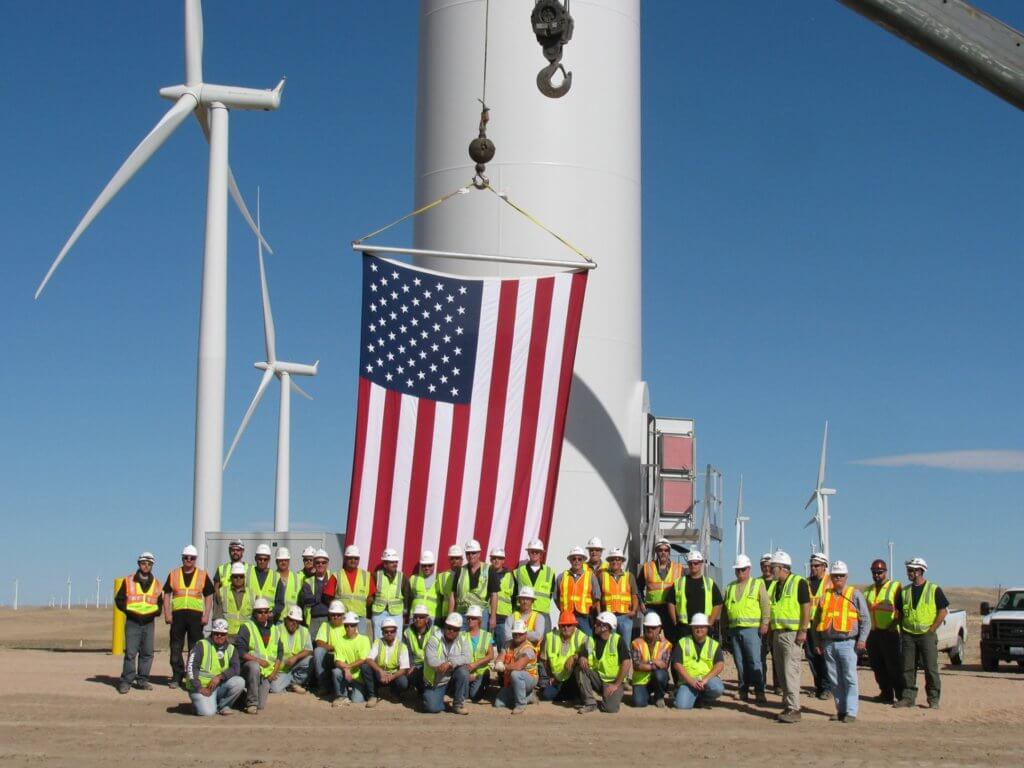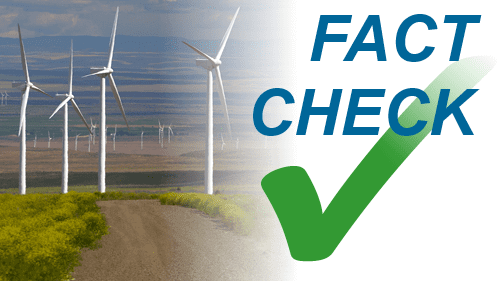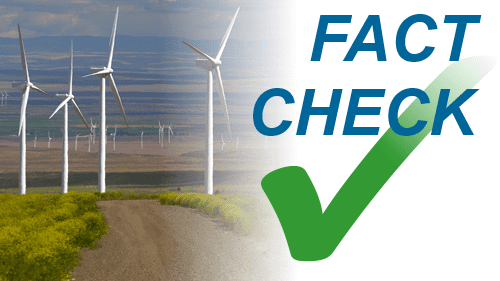Fact check: Lomborg lacking on wind's economics, emissions reductions
AWEA Manager of Transmission Policy Michael Goggin contributed to this article.
Controversial Danish economist Bjoern Lomborg, well known for his articles and publications on climate change, but also for using references that don't support his claims, had an article in Slate yesterday attacking wind.
Mr. Lomborg's analysis omitted a number of facts which we would like to bring to his attention:
The cost of wind power is coming down. Researchers from Lawrence Berkeley National Laboratory (LBNL) said recently in a widely publicized report that the cost of wind-generated electricity is now at an all-time low (see National lab report: Wind turbine prices drop as designs improve, U.S. supply chain develops, November 1, 2011). LBNL said wind turbine prices have dropped sharply in recent years, due largely to the scaling up of turbine size to reduce cost of energy (COE) and the growth of a domestic supply chain as the U.S. dollar has declined against other major currencies.
That phrase "growth of a domestic supply chain" is key. During the past five years, the U.S. wind industry has grown at an annual rate of 33 percent. Today, over 400 facilities across 43 states manufacture for the wind energy industry, and 60 percent of a wind turbine’s value is now produced here in America, compared to 25% prior to 2005. American manufacturing jobs are coming back, with tens of thousands of new jobs from wind power. Also, more than $70 billion of investment has been made since 2005.
With wind today, we are seeing a virtuous circle–developing more wind farms is leading to more demand for turbines and turbine parts, spurring the development of a new manufacturing industry, creating new jobs, and fostering increased competition, which results in lower costs.
Most people like the way wind farms look. That's why rotating wind turbines have become a staple of television advertising for all sorts of products totally unrelated to wind power or energy, and it's one reason wind power continues to enjoy high levels of support among the American public. My personal opinion, as one of those who find wind farms attractive, is that many people realize wind turbines symbolize the ability to harvest energy in a way that is largely free of the environmental impacts of other energy sources.
Wind turbine sound has no direct effect on human health. Multiple peer-reviewed scientific studies, the most recent by an independent expert panel commissioned by the Massachusetts departments of Environmental Protection and Public Health, have found no human health effects from wind turbine sound. At distances of 1,000 feet or more, sounds from wind turbines fall well below existing standards previously established for other types of equipment (see WINDPOWER report: New study finds minimal low-frequency and infrasound impact from wind turbines, May 25, 2011) and are lower than ambient sound in a typical home or office. While some people–particularly those who dislike the appearance of wind turbines–may find their sound annoying, thousands of people around the world and across America live near or within wind farms without concern. If you would like to know more about this, we urge you to visit an operating wind farm and listen for yourself.
Variable electric generation from wind farms can be integrated readily into utility systems. Utility system operators already deal regularly with massive swings in electricity demand and in the output of conventional generators. Also, the amount of electricity generated by wind farms changes slowly and predictably; failures at conventional (nuclear and fossil-fueled) power plants occur instantaneously without warning. The fast-acting reserves utility system operators must have on standby 24/7/365 for conventional outages typically cost dozens of times more than the slower-acting reserves needed for wind’s variability. It is more appropriate to talk about the need to back up large conventional power plants than about backing up wind power.
Using more wind power reduces utility system emissions. Because wind power reduces the use of fossil fuels whenever the wind is blowing hard enough for wind farms to generate electricity, it also (contrary to Mr. Lomborg's assertions) reduces the pollution that comes from burning those fuels. U.S. Department of Energy data conclusively show that states that have ramped up their wind energy output over the last several years, like Colorado and Texas, have seen major reductions in air pollution emissions, and every independent utility system operator that has examined the issue has found that adding wind energy to the system results in significant reductions in fossil fuel use and emissions. In fact, many of these studies have indicated that the net emissions savings of wind energy are even larger than expected because wind tends to disproportionately displace less flexible and dirtier coal generation, rather than more flexible gas generation.
Cost assumptions used in recent U.K. studies on which Mr. Lomborg relies are questionable. We will have more to say about this in the near future, but briefly, one study inflates the relative cost of wind energy by comparing it to a scenario that assumes the availability of very low-cost nuclear power–a premise with which many energy economists and experts would disagree. Also, that study and others assume that only a small quantity of land-based wind will be deployed in the U.K. and the balance will be offshore wind. This has the effect of increasing wind power's estimated cost, because (as one of the studies acknowledges) the offshore wind industry is still in its early days–as more experience is gained in operating offshore wind farms and a competitive supply chain develops for offshore turbines and their components, the cost of that technology will come down as it already has for land-based wind. (It also means that Mr. Lomborg's economic projections do not apply in general to the U.S., where large areas are available for land-based wind.) In addition, both studies greatly inflate the cost of wind by incorrectly assuming a large amount of backup capacity will need to be added, which as explained above does not reflect the way in which wind energy is integrated onto the power system today.



